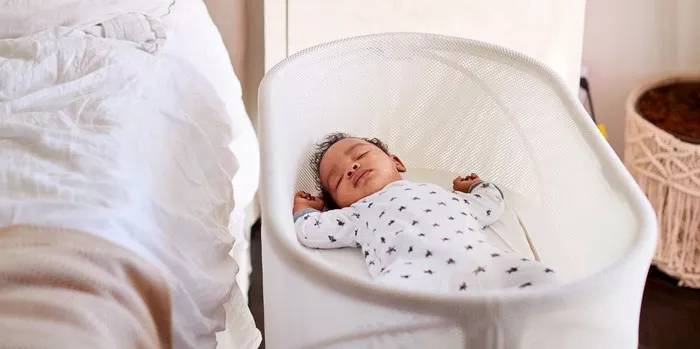Welcoming a newborn into the world brings a whirlwind of joy and responsibility for parents. Among the many concerns, ensuring a safe and comfortable sleep environment for infants ranks high. Baby swings are often perceived as a convenient solution to soothe babies and lull them to sleep. However, despite their popularity, there are crucial considerations regarding their safety and suitability for sleep. In this article, we delve into the question: How long can a newborn sleep in a swing?
Safety Risks:
While baby swings may seem cozy and secure, they pose significant safety risks when used as sleep aids. The American Academy of Pediatrics (AAP) warns against using swings, bouncy seats, or carriers for unsupervised sleep due to several potential hazards.
1. Difficulty Breathing: One of the primary concerns with newborns sleeping in swings is the risk of compromised breathing. The semi-upright position in a swing can cause a baby’s head to slump forward, restricting the airway and leading to difficulty breathing. This position may also increase the risk of respiratory infections or exacerbate pre-existing conditions such as reflux.
2. Head and Neck Injuries: The design of baby swings, with their harnesses and restraints, may provide a false sense of security. However, if a baby’s head flops forward or to the side while sleeping, it can strain the neck muscles or result in neck injuries. Additionally, sudden movements or tilting of the swing can cause the baby’s head to hit against the sides, potentially causing head injuries.
3. Suffocation: The soft padding and fabric of a swing can pose a suffocation risk, especially if a baby’s face becomes pressed against it. Infants lack the strength and motor skills to reposition themselves, increasing the danger of suffocation if their breathing becomes obstructed.
AAP Recommendations:
In line with promoting safe sleep practices, the AAP provides clear guidelines for infant sleep environments. According to the AAP:
1. Babies should sleep on a flat, firm surface: This recommendation emphasizes the importance of placing infants on a stable mattress or sleep surface to reduce the risk of suffocation and positional asphyxia.
2. Preferably on their backs: Back sleeping is associated with a lower risk of sudden infant death syndrome (SIDS). The supine position allows for optimal airway clearance and reduces the likelihood of airway obstruction.
3. Discourage sleeping in swings, bouncy seats, or carriers: The AAP advises against using these devices for unsupervised sleep due to the aforementioned safety concerns. These products are not designed for prolonged sleep and may increase the risk of accidents or injuries.
Time Limit:
Given the safety considerations, it’s crucial to limit the duration of time that a newborn spends in a swing. While short periods of supervised use may be acceptable for soothing or entertainment, extended periods of sleep in a swing are not recommended.
Infants should not spend more than 30 minutes in a swing at one time: This time limit helps prevent prolonged exposure to potentially harmful positions and reduces the risk of positional asphyxia.
After four months, limit swing use to about 25-30 minutes per session: As babies grow and become more active, their tolerance for being confined in a swing diminishes. Shorter sessions help prevent discomfort and promote healthy movement and development.
Proper Usage:
It’s essential for parents to understand that swings are intended for play and supervised relaxation, not as substitutes for cribs or bassinets for sleep. If a baby falls asleep in a swing, parents should promptly transfer them to a safe sleep environment.
Transition to a crib or bassinet: When a baby drifts off to sleep in a swing, caregivers should gently move them to a crib or bassinet to continue their rest. This transition ensures that the infant remains in a safe sleeping position and reduces the risk of accidents or injury.
Create a conducive sleep environment: To promote restful sleep, ensure that the crib or bassinet is free from hazards such as loose bedding, pillows, or soft toys. Maintain a comfortable room temperature and avoid overdressing the baby to prevent overheating.
Flat Surface:
The importance of placing babies on a flat surface for sleep cannot be overstated. Flat surfaces provide a stable and supportive sleeping environment, reducing the risk of accidental suffocation or positional asphyxia.
1. Optimal sleep position: Placing babies on their backs on a flat mattress or firm surface is the recommended sleep position for infants. This position allows for unrestricted airflow and minimizes the risk of airway obstruction.
2. Avoid inclined surfaces: While some baby swings offer reclined or inclined positions, these are not suitable for unsupervised sleep. Inclined surfaces can increase the risk of positional asphyxia and compromise breathing, especially for newborns with underdeveloped neck muscles.
Conclusion:
In conclusion, while baby swings can be useful for calming and entertaining infants, they are not designed for prolonged sleep. Safety considerations, including the risk of difficulty breathing, head and neck injuries, and suffocation, highlight the importance of adhering to AAP guidelines for safe sleep practices. Parents should limit the time spent in swings, prioritize flat sleeping surfaces, and promptly transfer sleeping babies to cribs or bassinets. By prioritizing safety and proper sleep environments, caregivers can promote healthy sleep habits and reduce the risk of sleep-related accidents for newborns.


